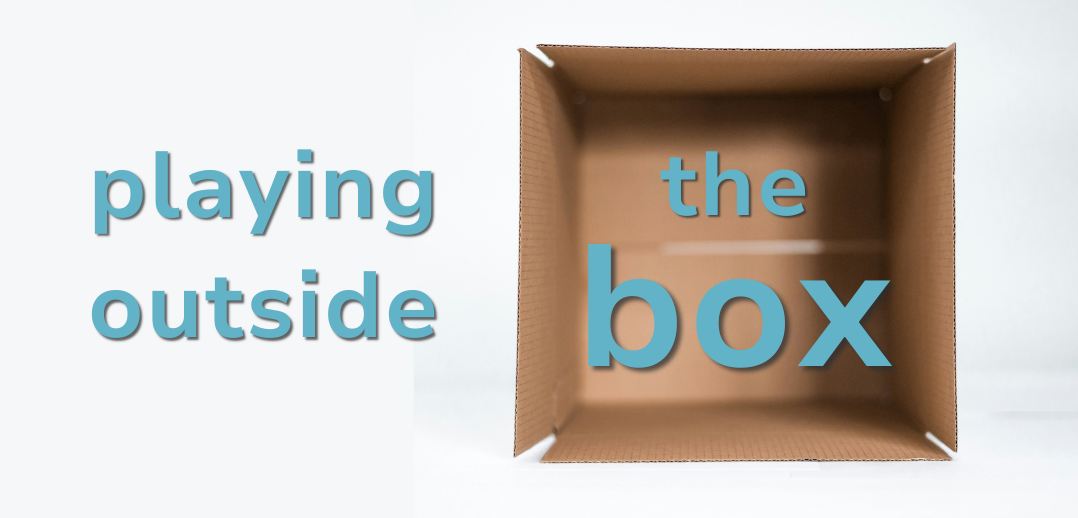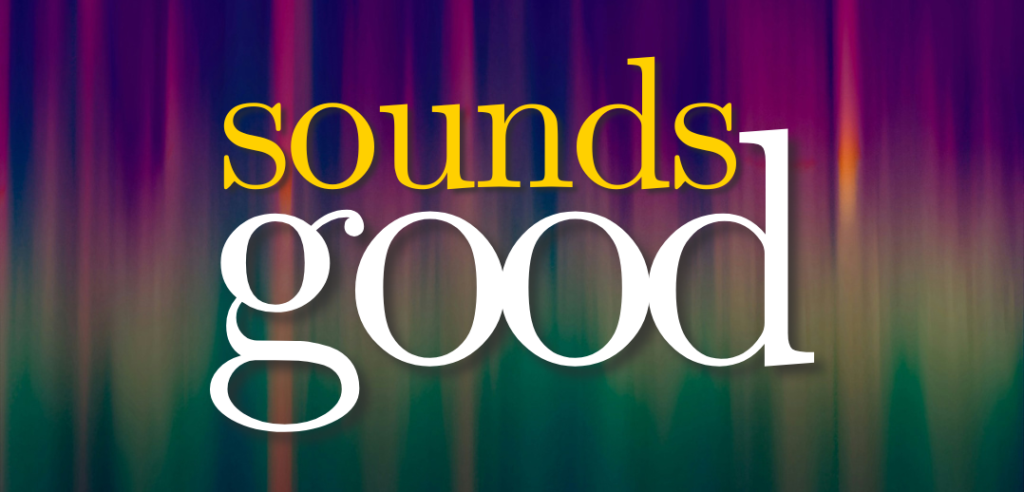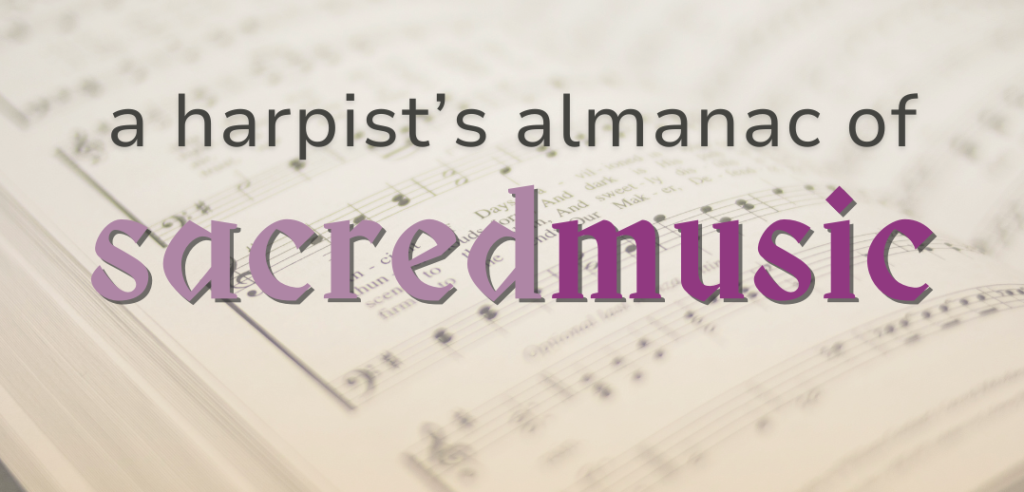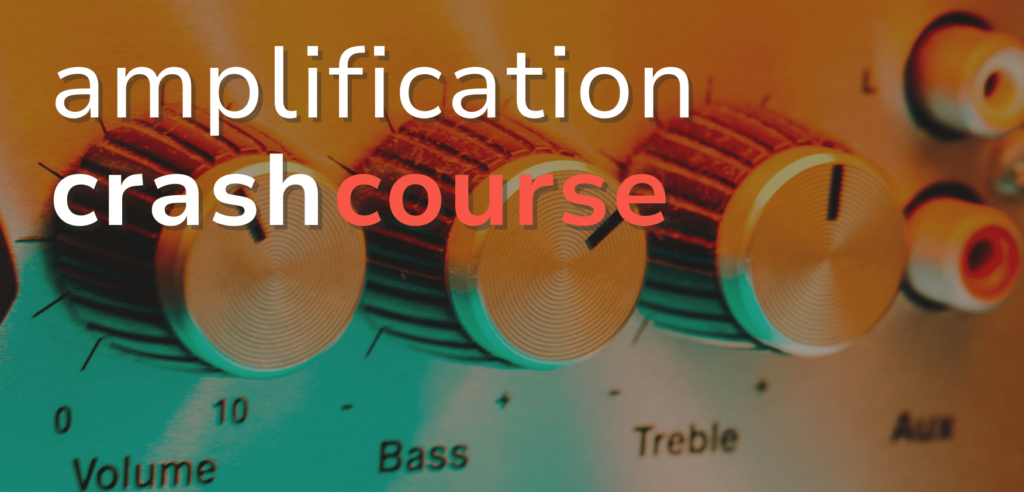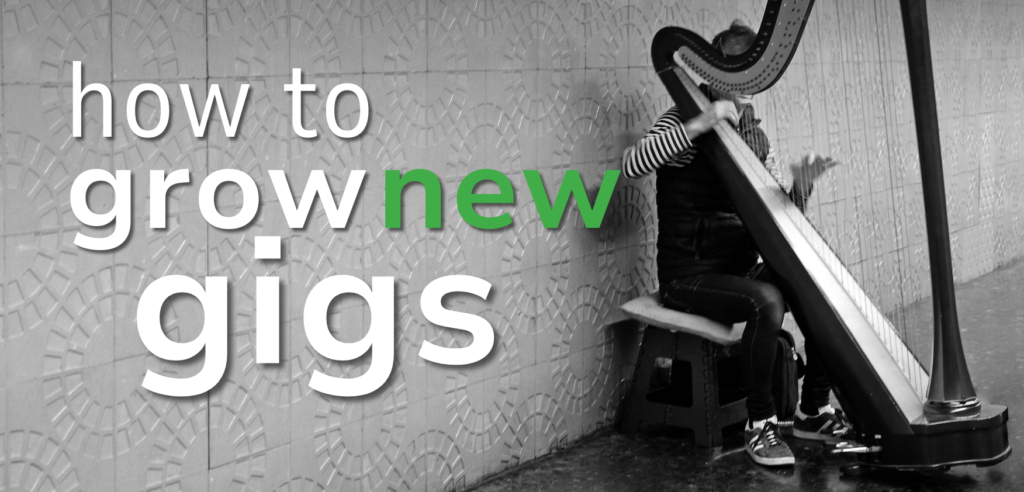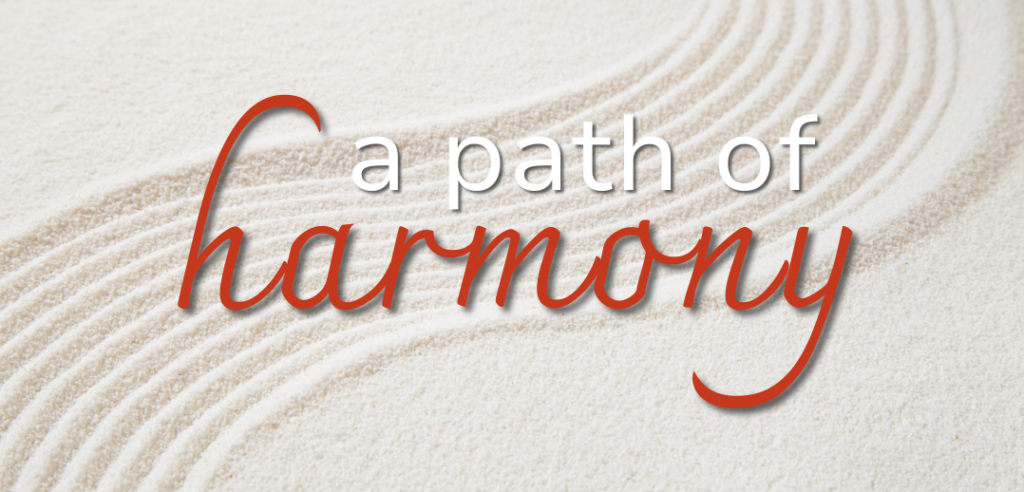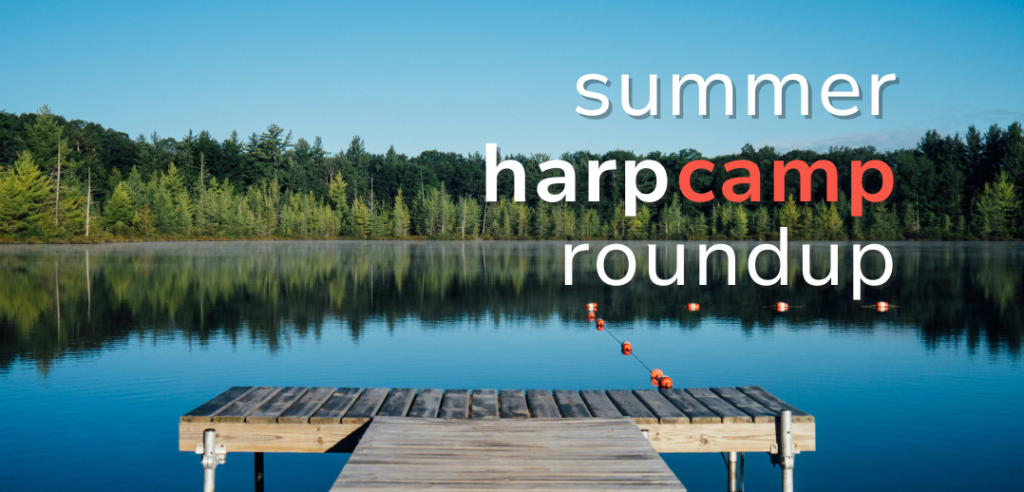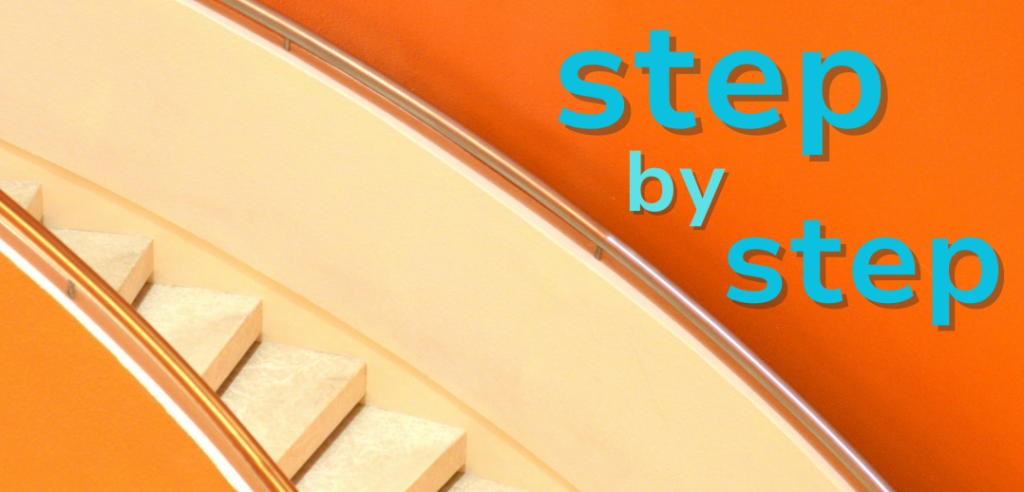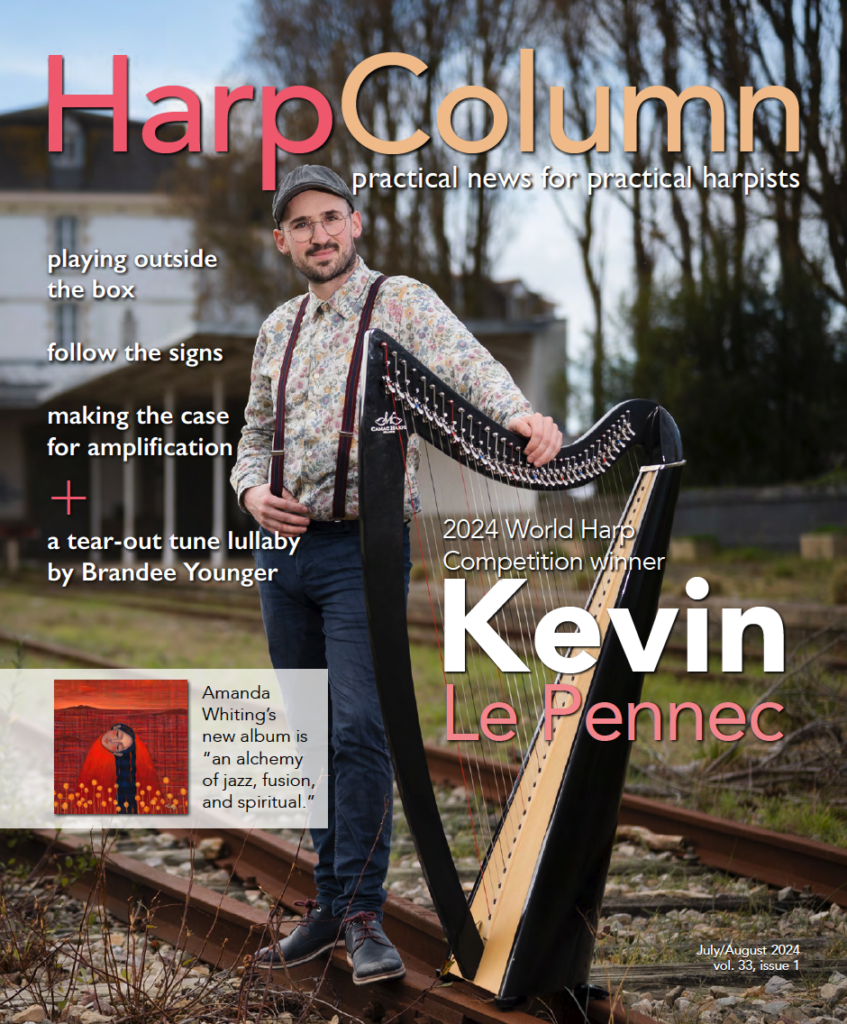You are scheduled to present a harp program, but you have no idea what repertoire you should play. It’s a common dilemma for harpists. As a student, often our repertoire selection is determined for us by our teachers, degree or certification requirements, or competition parameters. Without any of those constraints, suddenly the possibilities for repertoire selection open up! With great freedom, however, also comes great responsibility. Too often, harpists reach for the familiar standard repertoire, usually played in chronological composition order (i.e: something Baroque, followed by something Classical, something Romantic, and maybe something contemporary). Often we think programs need to end with a flashy “showpiece.” We have lots of amazing standard repertoire that deserves to be played, but it is important to consider why you are playing it, and ask yourself whether it could be presented in a more engaging way.
Ending with a showstopper that gets the audience on its feet is fun, but what are some alternative moods with which you could leave your audience? Playing your standard repertoire is fine, but is there a new lens with which you could present it to your audience? Is there new (or new to you!) repertoire out there that features more diverse voices? Take the opportunity to find a new piece, perform your own compositions, commission new works, and dress up old favorites. To generate ideas for unconventional programming, it is helpful to see great examples, so let’s take a look at some innovative recitals to draw inspiration for your next program.
Noel Wan’s Alfred Hitchcock program
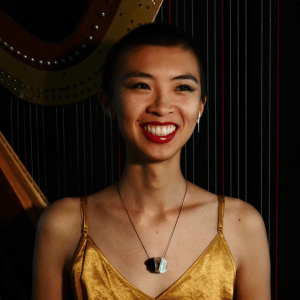
Noël Wan is on the faculty at Florida State University. She has won prizes at a number of international competitions, including the gold medal at the 2022 USA International Harp Competition and first prize at the 2010 Dutch Harp Festival Competition.
Favorite rep to fit a variety of programs:
- Anything by Bach—it can pair beautifully with other genres (e.g. Alice Coltrane)
- Anything that shows off the harp in an unexpected way
The program for Noel Wan’s solo recital at the recent American Harp Society National Conference is a great example of creative repertoire choices. When planning the program, Wan said she started with the conference theme, “That’s Entertainment.” This led her to think of films, and one of her favorite films: Alfred Hitchcock’s The Birds. Her program is a concept-driven narrative recital that both tells the story found in The Birds and also explores the motifs of darkness, light, water, horror, beauty, and, of course, birds. She describes her repertoire selection process as “concept first, then music I already know, then fill in the gaps.” Filling in the gaps can include finding hidden gems, learning bucket list pieces, or transcribing works written for other instruments. Wan’s program includes both standard repertoire like Jean Cras’ Deux Impromptus and Michael Mauldin’s Birds in Winter and contemporary works like Elena Kats-Chernin’s Chamber of Horrors. She also includes transcriptions like Olivier Messiaen’s O sacrum convivium and even The Beatles’ “Blackbird.” (Clearly, great minds think alike, because Beyonce also covered “Blackbird” recently.)
When building out this recital program, Wan says she drew on her love of literature to help create a smooth narrative and explore different thematic motifs. Each piece on the program can be approached from multiple dimensions: composer backstory, composition backstory, musical language, and overall sound. In her programming, she describes thinking of each recital like a writer constructing a story, and also like a museum curator building a holistic artistic experience.
Amy Nam’s “Cosmic Fragments: Words and Music about Life, the Universe, & Everything”
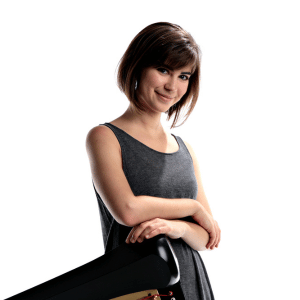
Amy Nam is a composer and performer. She won second prize at the 2024 World Harp Competition.
Favorite rep to fit a variety of programs:
- Works by Caroline Lizotte, including Stellar Sonata and Suite Galactique
- Sean William Calhoun’s The Fae Nucleus (a commission project)
Amy Nam recently won second prize in the World Harp Competition at the Dutch Harp Festival. I spoke to her about her award-winning program, “Cosmic Fragments: Words about Life, the Universe, and Everything.” She describes the program as “using both music and text in dialogue with each other to say something about life.” She paired each piece of music with poetry and spoke the poetry over electronic interludes composed by her friend, Sean William Calhoun. Nam says she carefully and intentionally selected the music and poetry to create a holistic program that explored existential questions about life. Her program included her own composition (The Harp at the End of the Universe), standard repertoire (“Hymn: St. Denio” from Benjamin Britten’s Suite for Harp), commissioned works (The Fae Nucleus by Sean William Calhoun) and contemporary works (Haiku para Jan by Gabriela Ortiz and “Radioso Sono” from Stellar Sonata by Caroline Lizotte).
To find repertoire, Nam went on a big hunt, searching for new-to-her works that would fit with her concept. One successful strategy she used was that every time she heard a piece she liked by a composer, she would go look and see if they had written anything for harp. This is how she found the wonderful work by Gabriela Ortiz. Like Wan’s process, Nam put the concept or theme of her recital first, and then sourced repertoire from a variety of places. Nam ended up with an interesting selection of pieces featuring composers from a wide variety of backgrounds. She also drew on her love of literature, poetry, and sci-fi to create a program that was immersive and meaningful for the audience. The program was also an interactive experience—the audience was encouraged to participate in a guided meditation and even sing with the music.
Ari Sol’s “Stronger Together: Music for Shared Experience, Community, and Togetherness”
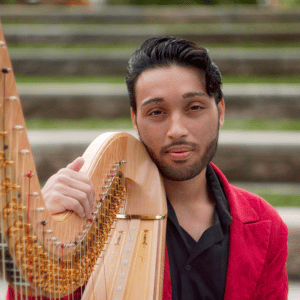
Composer and performer Ariel (Ari) Sol received third prize at the 2024 World Harp Competition and won the 7th USA International Harp Competition Ruth Inglefield Composition Contest.
Favorite rep to fit a variety of programs:
- Sol’s new concerto Strum, which can be played with string orchestra or string quartet, and individual movements can be played on their own. “It’s inspired by different styles of harp and ukulele. It fits in the hands well, and it’s accessible to learn,” he says.
Ariel (Ari) Sol recently won third prize in the World Harp Competition with the program, “Stronger Together: Music for Shared Experience, Community, and Togetherness.” His performance consisted entirely of his own original works, several of them involving innovative uses of electronics and audience participation. Works included his new harp concerto Strum (music and recordings to be released soon!), Same Sun (a work that involved using light sensors, and then having the audience shine lights to alter the electronic effects to be “darker” or “brighter”), and Neuron Mirror Neuron (a work that used an electronic orb that is tossed between audience and performer to create live, interactive electronics). Sol’s program put audience participation and collaboration front and center to explore, in real time, the concepts of shared experience and togetherness. He describes his new concerto Strum to also be a product of community, as it has been workshopped and performed by many harpists.
While this program featured entirely his own compositions, Sol notes that even if you aren’t a composer, programming can still be a creative process. He describes “curation as creation” as an important concept for generating programming that truly explores relationships between people and the world. “The music I make is most effective when it’s coming from the most honest version of myself,” he says. Sol notes that his favorite concerts to attend are ones where he feels like the musician is the only person who could have given that particular performance.
Emily Levin’s “Experiments in Play”
Emily Levin recently created an interesting recital concept she calls “Experiments in Play.” She describes the concert as escape room meets choose-your-own-adventure meets Dungeons and Dragons. “Each audience member received a field guide before the concert, and I narrated as we went along,” she explains. “The choices the audience made decided the program order. The audience (or adventurers, as they were called), had to travel through a landscape in search of an artifact, and along the way there were puzzles they had to solve. Each piece on the program was inspired by this landscape, from Florence’s Price’s Three Roses (found in a rose garden) to Jon Cziner’s Music for the Temple, during which the audience had to solve a cryptogram to enter the locked door at the top of the temple. Even Grandjany’s Rhapsodie had the audience solve the correct Latin chant (heard in the piece) to unlock a mysterious box!”
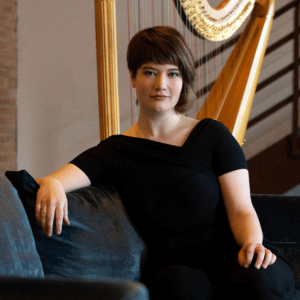
Emily Levin is principal harp of the Dallas Symphony and founder of GroundWork(s), a project to commission a composer from every U.S. state to write a piece centering on their hometowns.
Favorite rep to fit a variety of programs:
- Works from Levin’s GroundWork(s) project, including Michael Ippolito’s Mythos.
Similar to Wan and Nam, Levin approached her repertoire selection by first thinking of what fit her theme and her goal of actively engaging the audience. Levin included both standard repertoire like the Grandjany Rhapsodie, but also contemporary works, including a piece she commissioned called Mythos, by Michael Ippolito, which is based on the Minotaur myth. Levin says audience members described how much fun they had participating in this concert, which speaks to the joyful and playful experience she created.
Common threads
One thread I heard mentioned by all four performers was that they all felt compelled to choose repertoire that expressed who they were both as musicians and people, and the intentionality behind their repertoire choices helped them connect more deeply with audiences. I love the thought that each of us can express an honest and unique version of ourselves with the repertoire we choose. Each of these harpists also reached for repertoire that drew from their life experiences and interests outside of music, such as literature, film, poetry, and games. Emily Levin beautifully summarizes this: “Music does not exist in a vacuum. Every piece composed was influenced by something, whether it was society, other art genres, or the composer’s personal life. When we put programs of music together, I think it’s imperative that there is a why behind the program. We are curators as much as performers, and in order for the audience to have the best experience, we need to carefully put together music that complements, influences, and reacts to each other.” They also all prioritized the program concept and audience experience over difficult or flashy music.
Two key concepts throughout all of the programs are related to each other—experimentation and risk-taking. Wan mentions that she thinks of each program as an experiment. It doesn’t need to be perfect, but is a work in progress to be adapted and improved. Sol also points out that you can’t control the audience. You can plan for possibilities, but you have to be open to the audience reacting in a way you didn’t expect.
Of course, there are also practical concerns to consider when selecting repertoire, including: What do I have time to learn? Can I purchase or create the music? How long does the program need to be? What equipment do I have access to? (This is important when considering works with amplification and/or electronics.) Do I need to play the entire work, or would an excerpt or movement fit better? And most important: who is my audience?
Who is the Audience?
…if you go to [a concert of] almost any other genre of music, the performers are engaging with the audience, telling jokes, giving stories behind pieces, and more. We desperately need more of that in classical performances.
Just like a good writer considers their audience, a performer needs to carefully consider who might be coming to their concert, and adjust their programming accordingly. One example Sol gives is that he has been presenting his Neuron Mirror Neuron in warehouse spaces where the audience expectations around participation are much different than a “classical” audience in a concert hall. Children’s programming is another example where tailoring your music to the people present is crucial to the audience’s experience. I have found when designing programs for children that the more I can consider their interaction and involvement, the more successful the programs can be. I often break up longer pieces when performing for children and give them an activity to do for each section. I might ask them to use their imagination to come up with a story, or add rhythmic clapping, tapping, stomping, or other sound effects, or give them dance moves or hand gestures to go along with the music. It is also great to be flexible as a performer: notice who is present and how engaged they are, and be ready to change your plan accordingly.
When I play less formal concerts in community spaces like parks, libraries, and community centers, I often don’t know who might show up, so I prepare a variety of repertoire to select from based on what seems like it will most interest the present audience. One practical tip: I have found using a tablet for music reading gives me more flexibility in changing up my set-lists on the fly. No more digging through paper, and my entire music library is with me at all times.
Another aspect that stands out to me about the four sample programs we’ve looked at, as well as my own experiences, is how valuable it is to interact with your audience. Sol mentions that he “hates stages” because they separate the performer and audience. Levin agrees. “I get really frustrated when performers (including in orchestra concerts, where this is so prevalent!) never speak to the audience,” she says. “It creates this false hierarchy, where the audience is reduced to periodic applause, and the performer has no connection, no rapport with the audience. This is a huge problem in classical music—if you go to [a performance of] almost any other genre of music, the performers are engaging with the audience, telling jokes, giving stories behind pieces, and more. We desperately need more of that in classical performances.”
So how can you engage with your audience? Talk to them! Hearing the performer speak helps to create a human connection. The formal performance convention is to walk on and off stage between pieces, without speaking in between. Talking to the audience allows you to share your connection to the music—why you love the piece, what you find interesting about it, or why it is important to you. An important note, these don’t need to just be spoken “program notes” but can be a less formal and more friendly tone. Audiences love getting to know you as a person. This can also be a chance to orient them to any unusual aspects of your performance, and help them feel comfortable with the interaction. For example, if you plan to play parts of the program continuously without applause, either tell the audience or make it clear as you are moving through the sections so there is no anxiety about where to clap.
I love the interactive elements of Levin’s puzzles, Sol’s involvement of the audience in the actual sounds produced, and Nam’s inviting the audience to participate in a meditation and sing. These are all creative ways to get the audience members feeling like they are part of the performance rather than passive spectators. I have also found that in smaller, less formal settings, encouraging a conversation with the audience about the music can be really fun. They can ask questions and share their own connections with the music. A Q&A with the performers after the concert is also a great way to hear from your audience.
What about all the “not playing” stuff?
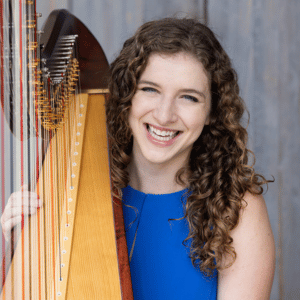
Author Hope Cowan’s Favorite rep to fit a variety of programs:
- Libby Larsen’s Theme and Deviations
- Astor Piazzola’s History of the Tango (harp and flute/violin/viola)
- Alejandro Basulto’s Sonata del Sureste (harp/flute/viola)
- Florence Price’s Adoration (harp and violin/flute/oboe)
- Timothy Roy’s Valentina V. (harp and immersive electronics)
So much of the concert experience is actually not about the music being played. The seating, lighting, stage transitions, clapping, speaking, attire, and programs all contribute to the overall experience and should be carefully considered. Important questions to ask about performing convention: does this fit my overall goal for the performance? Who does this include? Who does it exclude? Is there another way to stage my performance that would be more effective for my overall concept? Some examples include: encouraging applause in between movements, or playing portions or the entire program continuously without applause. Do you have options for lighting? Does it make sense for it to be dark? Or dramatic? Or keep the audience lights up? Do you need to leave the stage in between pieces? Is there a way to make stage transitions (moving chairs, etc.) more seamless to keep the flow of the concert going? Are you printing programs, doing QR code programs, or just verbally introducing each piece? If using QR code programs, are you open to people also using their phones for photos, videos, or possibly an interactive element like a puzzle or survey? Do your pieces need to be memorized? When using a “concept first” approach, all the standard performance conventions can become optional, and you get to choose what “rules” to follow.
Location, location, location
The setting for your concert will also influence how you construct your program. If you’re performing outside, amplification, sheet music control (again, tablets for the win!), and the comfort of the performers and audience are important. If your concert is at a museum, can you choose music that speaks to the art on display, or enhances the visitor experience? Art museums are great spaces to play music that might be unusual-sounding or more avant-garde, since people are arriving at the space open to experiencing art in a reflective way. If you are performing at a library, can you make literary connections to your music? Unconventional programming can be a great fit for unconventional spaces!
I hope you feel inspired to play outside the box for your next concert. Live performance is such a special way of connecting with others. Focusing first on your program concept and audience experience as you build your program can lead to increased audience engagement and be a more joyful and connected experience for everyone involved, including you! •





